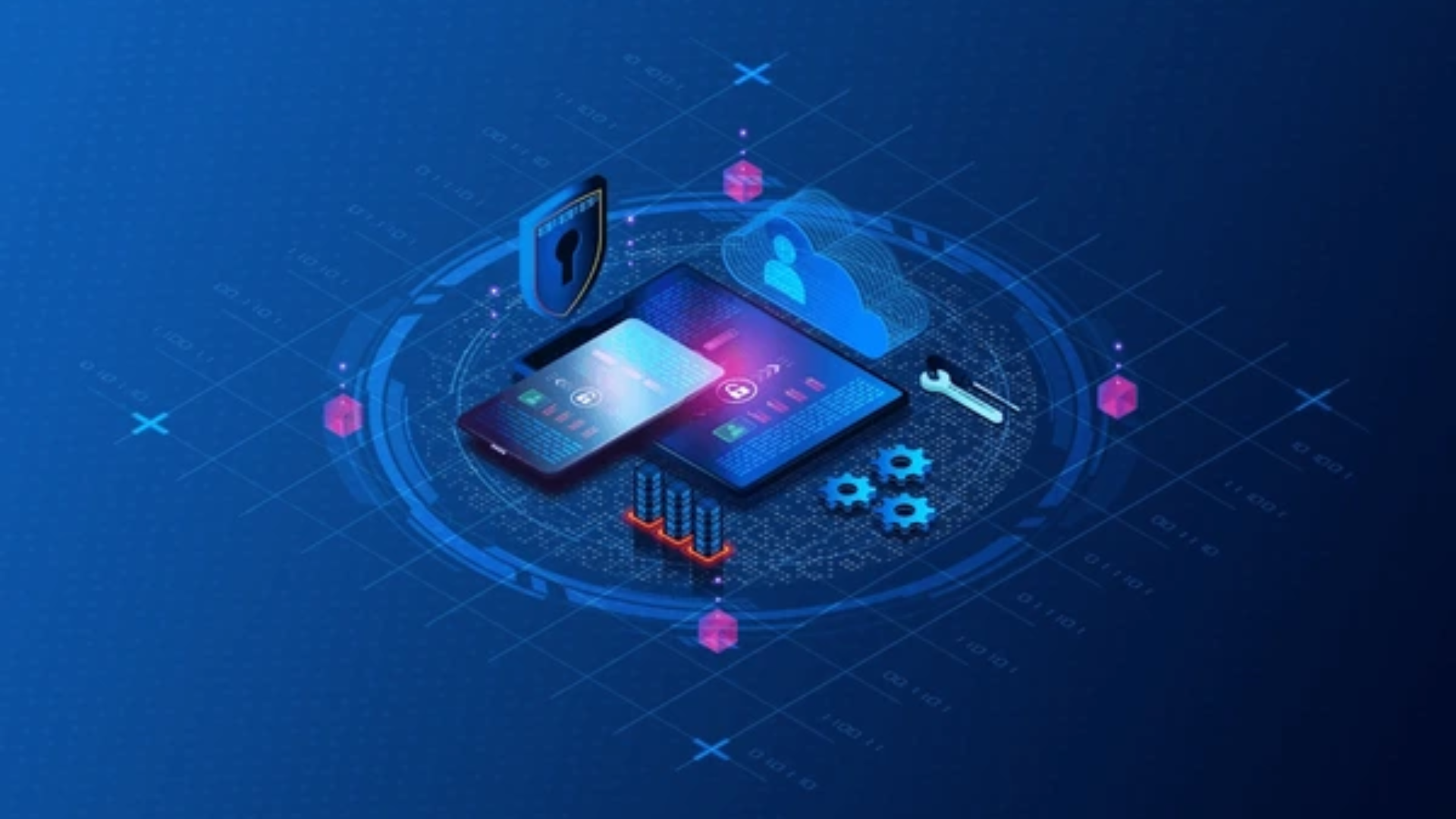Within an intricate modern business, information technology (IT) becomes the backbone of seamless operations, data security, strategic decision-making, and growth. As companies navigate complex IT landscapes, the concept of outsourcing IT services has gained significant traction.
In this article, we’ll explore the ins and outs of outsourced IT services, uncovering the key benefits of IT outsourcing.
What are outsourced IT services?
Outsourced IT services involve partnering with external experts to handle various aspects of your company’s IT needs. From managing day-to-day operations to implementing robust IT security, outsourced IT providers’ knowledge and experience often surpass in-house IT. This strategic collaboration allows businesses to focus on their core competencies while leaving IT complexities to the professionals.
You can also define an outsourced IT service as a Managed Service Provider (MSP). These two services are almost the same. Although Managed Service Providers usually offer a more sustainable commitment to your IT infrastructure performance in the long run.
Why high-growth companies want to outsource it when they scale
High-growth companies, with their ambitious expansion plans, require IT solutions that can keep pace with their growth trajectory.
Here are some compelling reasons why these companies turn to outsourced IT services:
Focus on core competencies
As a company scales, its primary focus should be on its core competencies and strategic initiatives. IT, while crucial, is rarely the company’s core function.
Outsourcing IT services allows high-growth companies to delegate non-core IT tasks to experts, enabling their internal teams to concentrate on driving the business forward and fostering innovation.
Access to expertise
Scaling businesses often require specialized IT skills and knowledge to handle complex projects and emerging technologies.
Outsourced IT service providers bring a wealth of experience and expertise across various IT domains. Partnering with these experts ensures high-growth companies have access to the latest technology, best practices, and industry insights.
Scalability and flexibility
The IT needs of high-growth companies are dynamic and can fluctuate with market demands and business growth.
Outsourced IT services offer scalability and flexibility, allowing businesses to quickly adapt to changing requirements without the hassle of hiring or downsizing an in-house IT team.
This adaptability is vital for accommodating peak periods and project-specific demands.
Risk mitigation and cybersecurity
With the increasing number of cyber threats and data breaches, high-growth companies must prioritize cybersecurity.
As recently as 2022, global cyberattacks increased by 38% compared to 2021, with the Asia Pacific region having a 22% increase.

Outsourced IT service providers invest in robust cybersecurity measures, helping businesses mitigate risks and protect sensitive data.
These experts stay updated with the latest security trends, ensuring that the company’s IT infrastructure remains resilient against potential threats.
Cost savings
Investing in a comprehensive in-house IT department can be financially burdensome for growing companies.
Outsourcing IT services provides a cost-effective alternative. Our research at Esevel shows that companies can save up to 60% of their IT spending when they outsource IT.
Companies can convert fixed IT costs into variable costs, paying only for the services they need. This cost-saving approach allows businesses to allocate resources more efficiently and improve their bottom line.
Evaluating your business IT needs: The path to successful outsourcing
As businesses considering outsourced IT services, a crucial initial step is a thorough evaluation of their existing IT infrastructure and needs. This assessment helps determine whether an outsource company is the right choice and guides you toward the right outsourced IT partner and a tailored approach that aligns with your strategic
Assessing your IT infrastructure
Before venturing into outsourced IT services, it’s essential to have a comprehensive understanding of your current IT setup. Take stock of your:
- Hardware
- Software
- Networks
- and existing IT personnel.
Identify areas that are functioning well and those that require improvement. This evaluation forms the basis for outlining the specific services you require from an outsourcing partner.
Identifying pain points and challenges
Reflect on the challenges your business has faced in managing IT internally. For example:
Are there recurring technical issues, downtime, or security breaches?
Are your IT resources stretched thin, unable to keep up with the demands of a rapidly evolving technological landscape?
Have you faced difficulties in scaling your IT infrastructure to accommodate business growth?
Are your IT expenses fluctuating unpredictably?
Identifying pain points helps pinpoint areas where outsourced IT services can provide targeted solutions, relieving your team from persistent challenges.
Determining strategic IT goals
Your IT strategy should link with your broader business objectives. What do you aim to achieve through IT? Is it improved operational efficiency, enhanced customer experiences, or streamlined processes?
Define clear and measurable goals that outsourcing can support. This clarity ensures that your outsourced IT services provider understands your vision and can align their efforts accordingly.
Aligning IT with business objectives
The integration of IT with overall business strategy is pivotal. Your IT decisions should propel your business forward and not operate in isolation. Engage stakeholders across departments to understand their technology requirements and pain points.
Collaboratively define how outsourced IT services can contribute to the organization’s broader goals, fostering enthusiasm by the whole company.
Crafting a tailored outsourcing approach
Every business is unique, and so should the outsourced IT solution. With your IT landscape assessed and goals outlined, collaborate with potential providers to craft a tailored approach. Define the scope of services, expected outcomes, and key performance indicators (KPIs). This approach ensures that both parties are on the same page and working toward shared success.
Proactive vs. reactive outsourcing
Consider whether you require proactive IT support or simply reactive assistance. Proactive services involve ongoing monitoring, preventive maintenance, and strategic guidance. Reactive services only involve troubleshooting and resolving issues as they arise. Understanding your preference can influence the type of outsourcing partner you choose.
In conclusion, the process of evaluating your business needs for outsourced IT services is critical to launch a successful partnership. By following the above process, you can reap the full benefits of outsourced IT services. The next step is selecting the right partner – a topic we’ll explore in the following section.
Select the strategic outsourced IT partner for growth
Remember, the journey toward outsourcing is not about finding a technical solution but about strategically enhancing your business’s growth potential.
Therefore, choosing a partner is akin to selecting a co-pilot for your business’s technological journey. The right partner can boost your efficiency, security, and innovation, while the wrong one could lead to turbulence. In this section, we’ll delve into the art of choosing the perfect outsourced IT partner, ensuring a harmonious collaboration.
Researching potential IT service providers
The first step in this quest is research. Cast a wide net and identify potential outsourced IT service providers that align with your industry and business size. Leverage online resources, industry forums, and referrals to create a list of contenders.
Key factors to consider
As you scrutinize potential partners, several factors will guide your decision-making process:
1. Expertise and experience: Look for a provider that not only excels in technology but also understands your business. The synergy of technical expertise with business acumen ensures that the outsourced solutions are not just functional but also strategically aligned.
2. Service offerings: Your needs are unique. A suitable partner should offer a range of services that match your requirements.
3. Service Level Agreements (SLAs): SLAs define the expectations and responsibilities of both parties. Clear SLAs ensure transparency and accountability throughout the partnership.
4. Client references and case studies: Request references from previous clients. Case studies provide a glimpse into how the provider has navigated challenges similar to yours.

Making the selection process
Narrow down your list to a handful of contenders based on the factors mentioned above. It’s essential to involve key stakeholders in this process, as their perspectives can shed light on different aspects of compatibility. Schedule meetings or consultations to get a feel for the provider’s communication style, responsiveness, and cultural fit.
Pro tip: Checklist for selecting an outsourced IT partner
To streamline your decision-making process, consider the following criteria:
Industry expertise and experience:
- Does the provider possess a proven track record of success in your industry?
- Have they demonstrated their ability to address challenges specific to your sector?
Comprehensive service offerings:
- Do the services they offer align with your organization’s IT requirements?
- Can they provide a range of solutions that cater to your diverse needs, from network security to hardware management?
Transparency in SLAs:
- Are their Service Level Agreements (SLAs) clear, comprehensive, and aligned with your expectations?
- Do the SLAs cover crucial aspects such as response times, resolution times, and escalation processes?
References and case studies:
- Can the provider offer references from clients in similar industries?
- Do they have case studies that showcase successful collaborations and problem-solving skills?
Communication and collaboration:
- Is their communication style compatible with your team’s preferences?
- Are they responsive and proactive in their interactions?
Cultural compatibility:
- Does the provider’s work culture align with your organization’s values and practices?
- Are they adaptable to different work cultures, especially in cases of offshore outsourcing?
Data security measures:
- Can they provide detailed information about their data security protocols?
- Do they comply with industry standards and possess relevant certifications?
Disaster recovery and business continuity:
- How robust are their disaster recovery plans?
- Have they demonstrated their ability to ensure business continuity in the face of disruptions?
Scalability and flexibility:
- Can the provider accommodate your business’s growth and changing needs?
- Are their solutions scalable and flexible to adapt to future technological advancements?
Innovation and strategic alignment:
- Do they exhibit a forward-thinking approach to technology?
- Can they collaborate with you to align their IT strategies with your broader business objectives?
Financial transparency:
- Is their pricing structure transparent, with no hidden costs?
- Do they offer competitive pricing that aligns with your budget?
Feedback and continuous improvement:
- Do they value feedback and demonstrate a commitment to continuous improvement?
- Are they open to adapting their services based on your evolving needs?
As you evaluate potential outsourced IT partners, use this checklist as a tool to guide your decision-making process. A well-chosen partner is more than a service provider – they become a driving force behind your business’s transformation.
Navigating the decision
Selecting an outsourced IT partner is not merely a transaction. It’s a commitment to a partnership that can shape your business’s trajectory. Consider not only the immediate benefits but also the potential for long-term collaboration.
The decision to outsource IT services is a strategic leap toward efficiency, security, and innovation. By thoroughly evaluating your business needs, aligning IT goals with broader objectives, and selecting the right partner, you pave the path to optimal growth.
IT outsourcing challenges – resolved
The path to outsourcing IT services is not devoid of challenges, but each obstacle presents an opportunity for growth and refinement. Let’s explore the common challenges businesses may encounter when outsourcing IT functions and insights on how to overcome them.
Communication and collaboration hurdles
🤔 Challenge: Geographic, cultural, and language barriers can hamper effective communication with your IT partner. Lack of communication can lead to misunderstandings, delays, and even errors in implementation.
💡 Solution: Establish clear communication protocols from the outset. Regular video conferences, status updates, and project management tools can bridge the gap. Embrace transparency and encourage open discussions to align expectations.
Managing cultural differences (offshore outsourcing)
🤔 Challenge: When outsourcing to partners in different countries, varying work cultures and time zones can lead to operational challenges. Cultural nuances can impact communication styles, decision-making processes, and project timelines.
💡 Solution: Approach cultural differences with curiosity and a willingness to learn. Invest time in understanding your partner’s culture and practices. Set clear expectations regarding working hours, response times, and collaboration methods. Understanding and addressing these nuances becomes even more effective when working with an experienced offshore partner that prioritizes alignment and integration. For instance, choosing an established offshore staffing solution can help bridge cultural gaps through structured onboarding, local HR support, and talent matched to your business values.
Ensuring data security and privacy
🤔 Challenge: Entrusting your data to an external provider can trigger concerns about data breaches, leakage, and unauthorized access. Data security is vital, especially when sensitive customer information is involved.
💡 Solution: Prioritize data security in your selection process. Choose a provider with robust security measures, compliance certifications, and a proactive approach to cybersecurity. Establish clear data protection protocols and conduct regular audits.
Handling potential service disruptions
🤔 Challenge: Just like any IT system, outsourced services can face disruptions due to technical glitches, maintenance, or unexpected events. Downtime can impact your operations and compromise customer experiences.
💡Solution: Work with your outsourced partner to develop a comprehensive disaster recovery plan. Define protocols for addressing and resolving service disruptions promptly. Ensure that your provider has redundant systems in place to minimize downtime.
Manage IT processes better with Esevel
With remote work gradually becoming the norm, modern businesses find themselves at risk of technology attacks.
Managing IT without spreading out your level of control for the whole business? All IT tasks become remarkably simpler with Esevel’s IT management solution:
- Streamline your IT onboarding process with Esevel covering everything from device procurement to software setup for remote hires.
- Enjoy centralized device management for easy tracking of health, updates, and security.
- Enhance security with enforced strong passwords, encryption, SSO, and MFA.
- Benefit from global support in 88 countries







